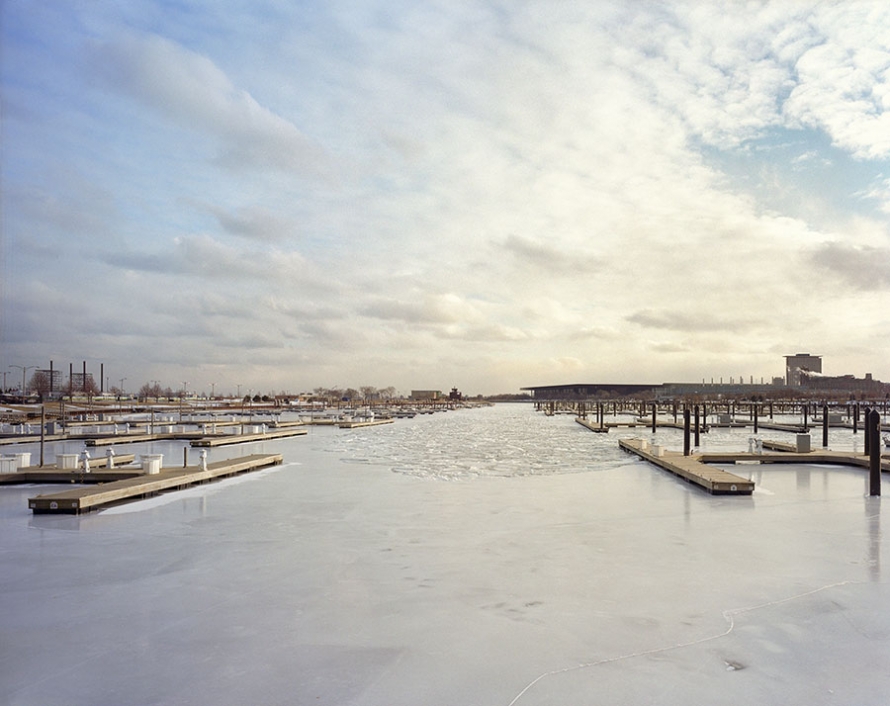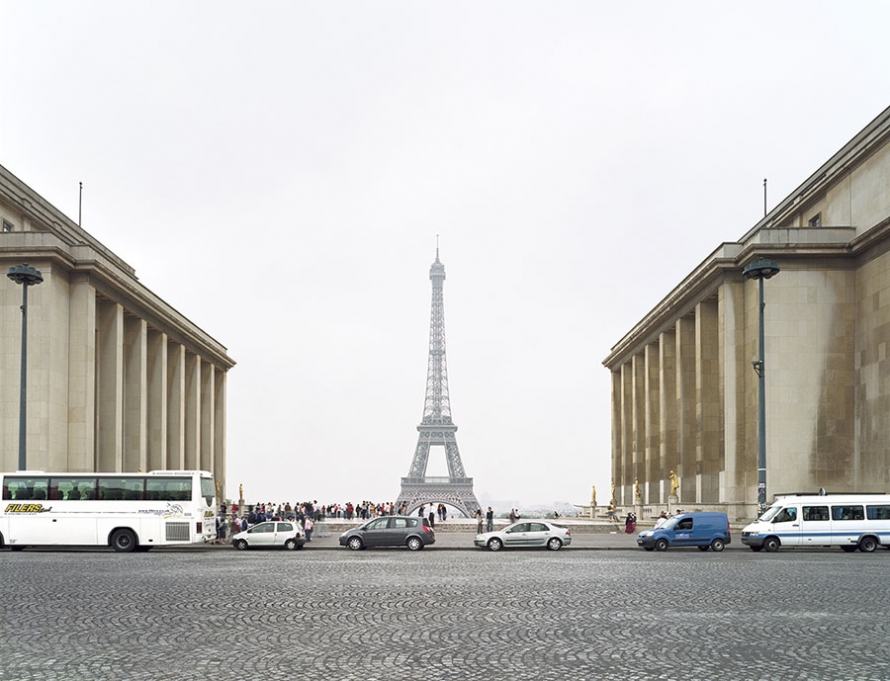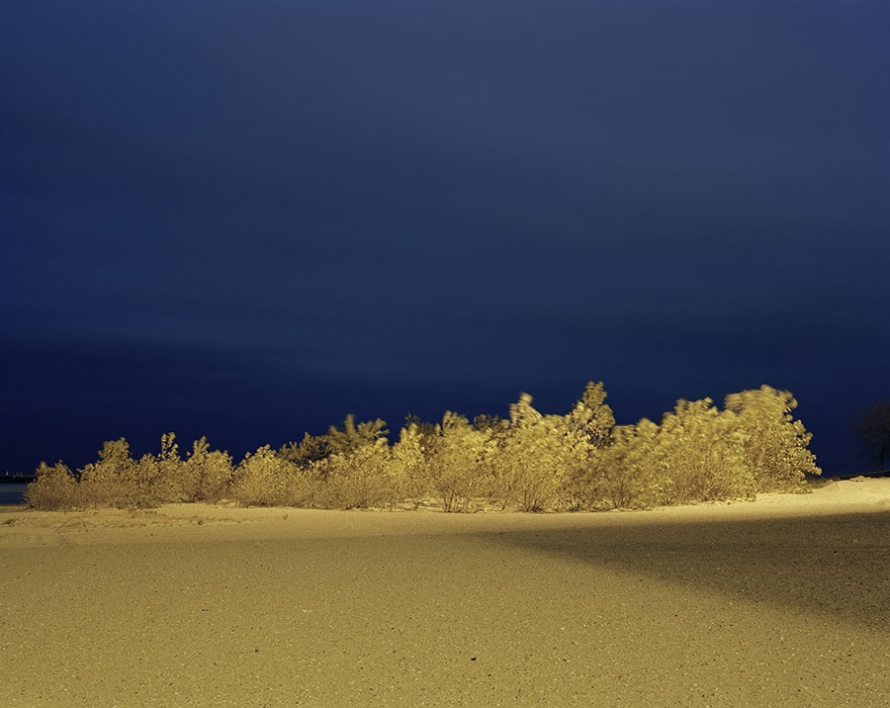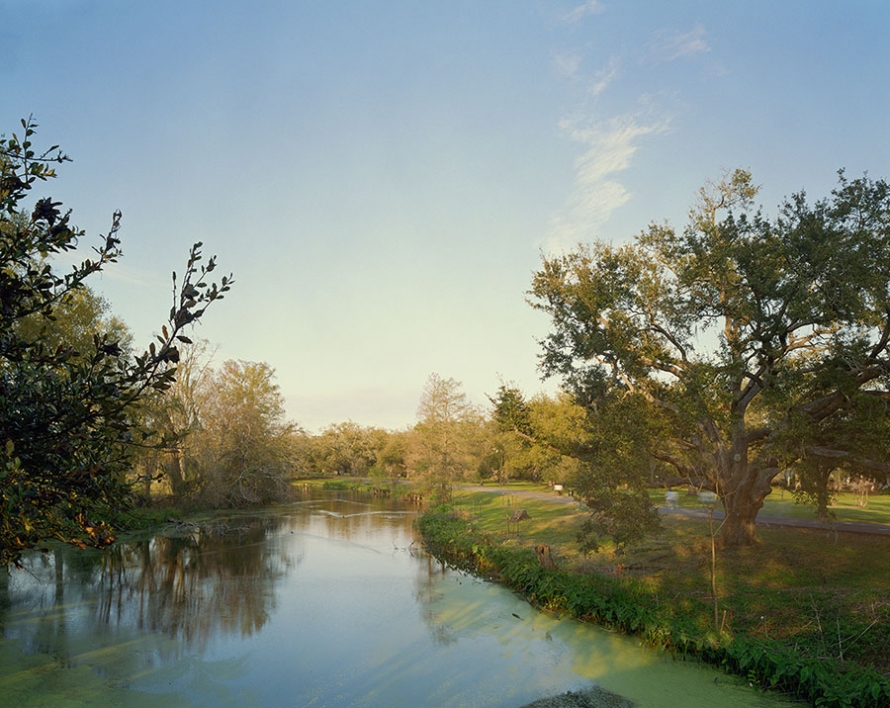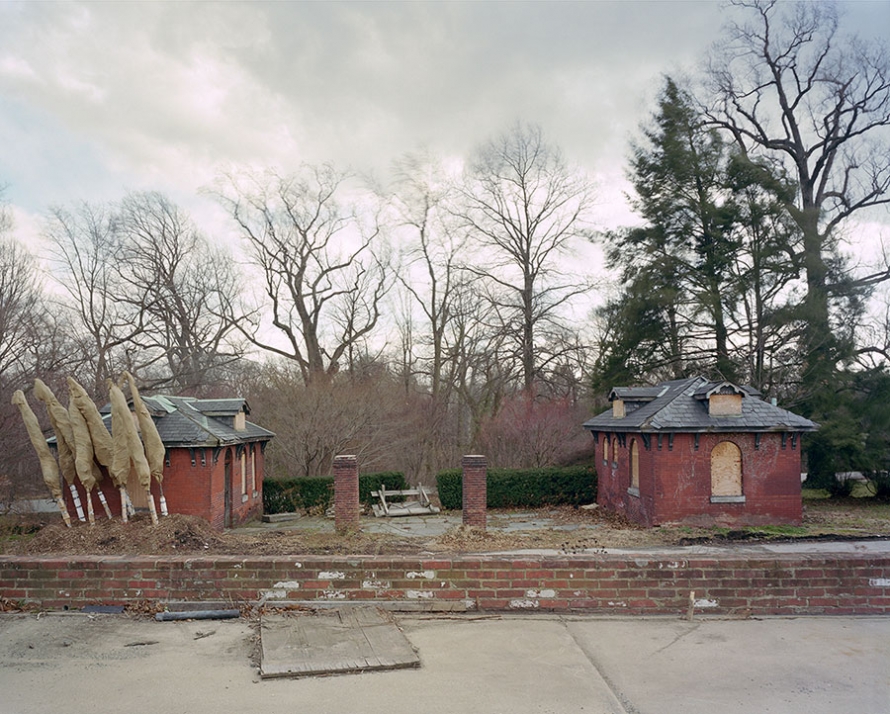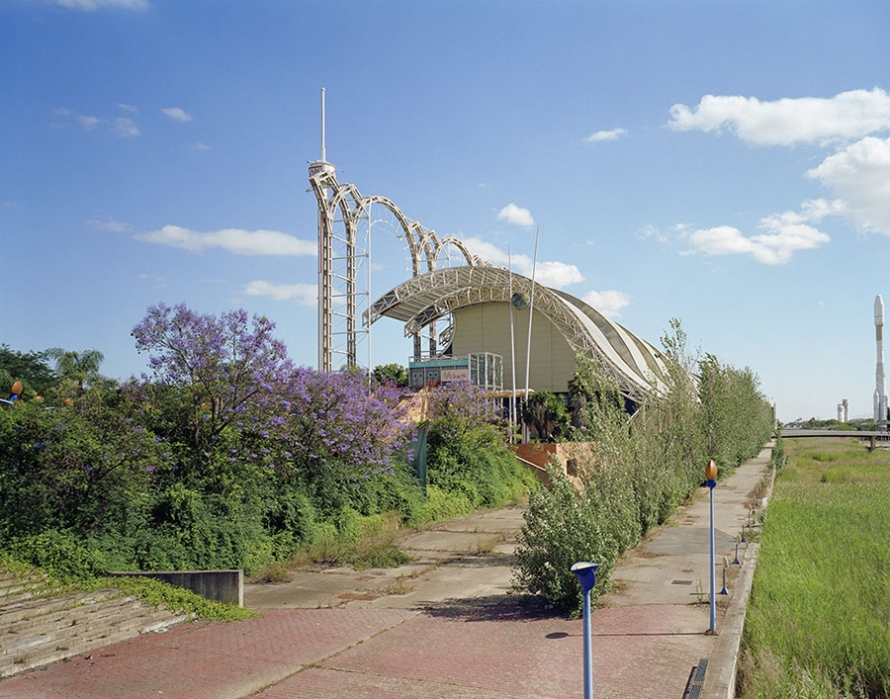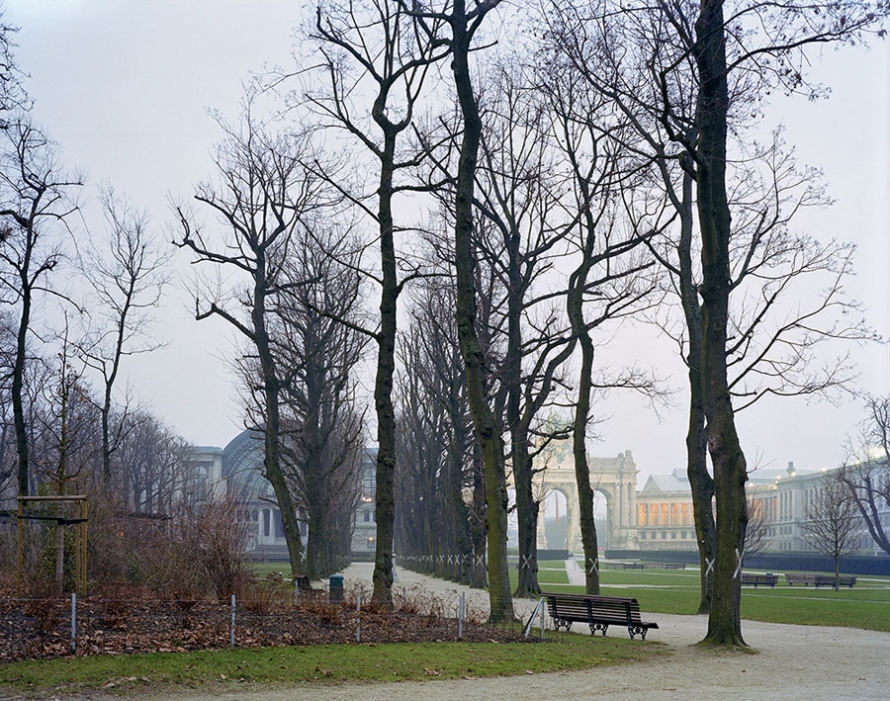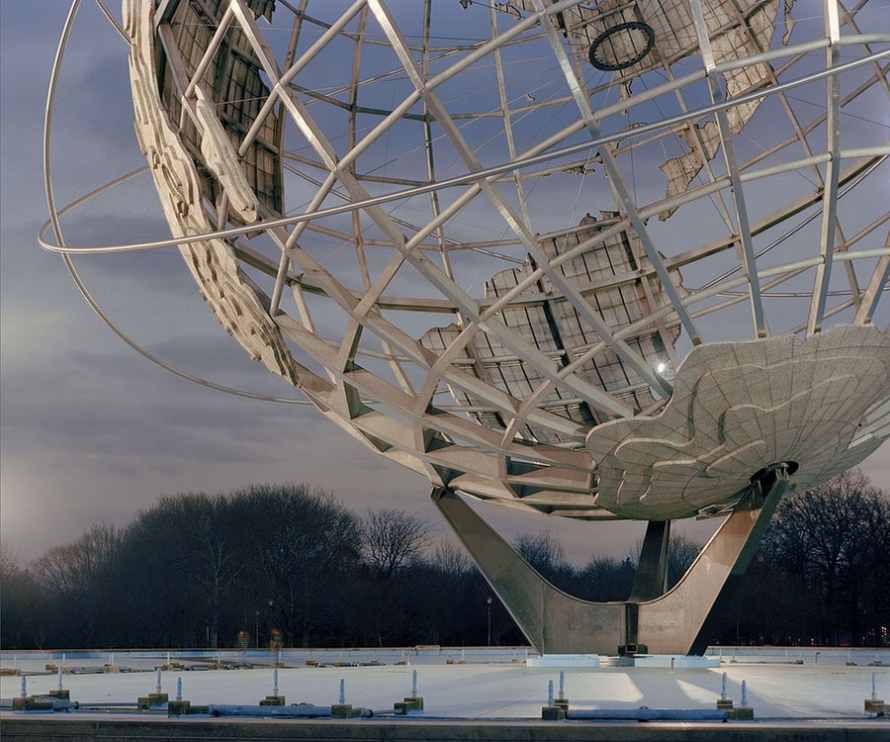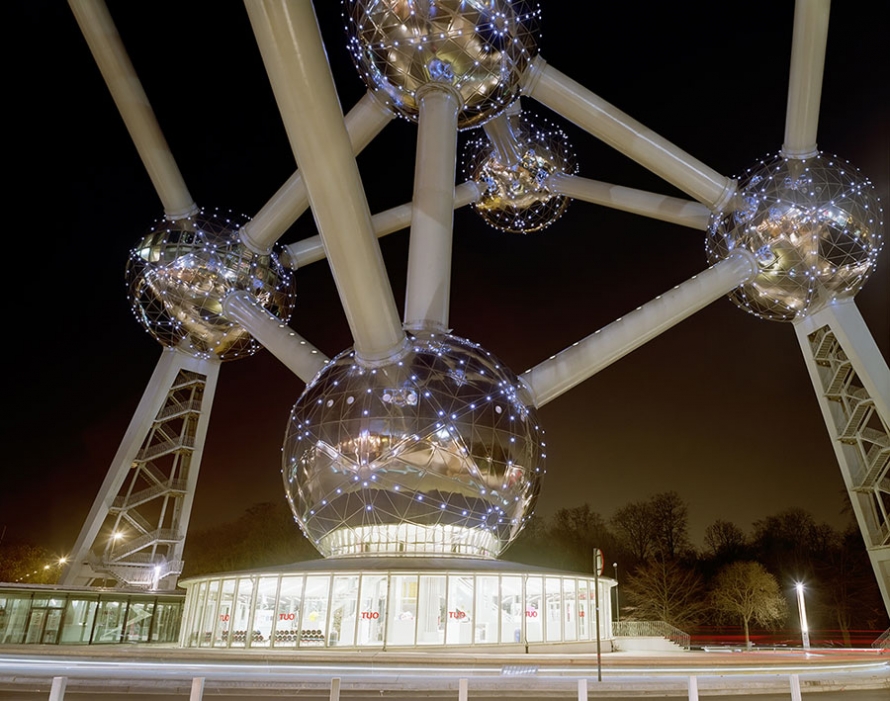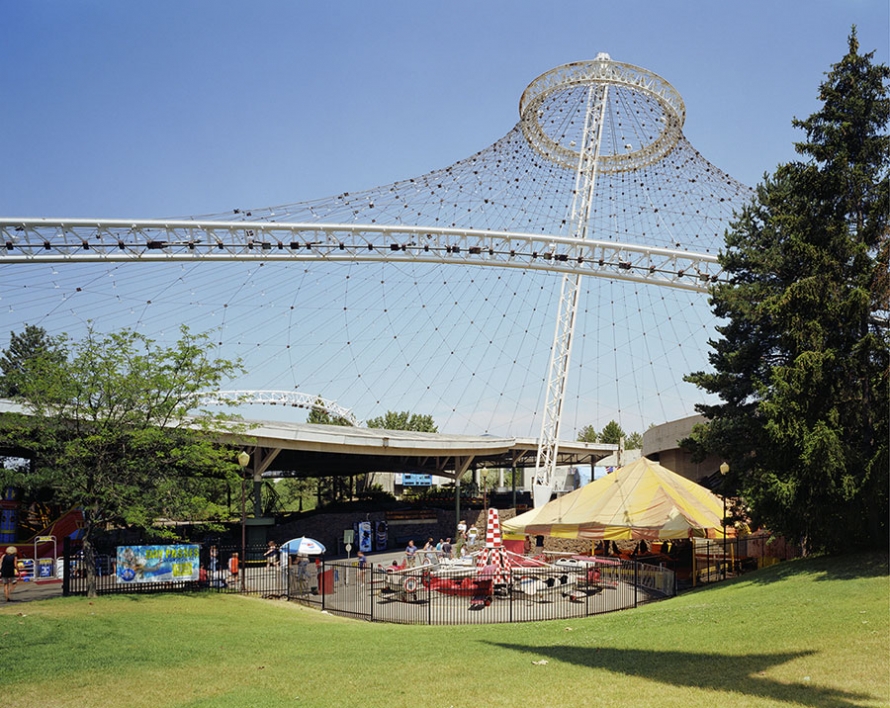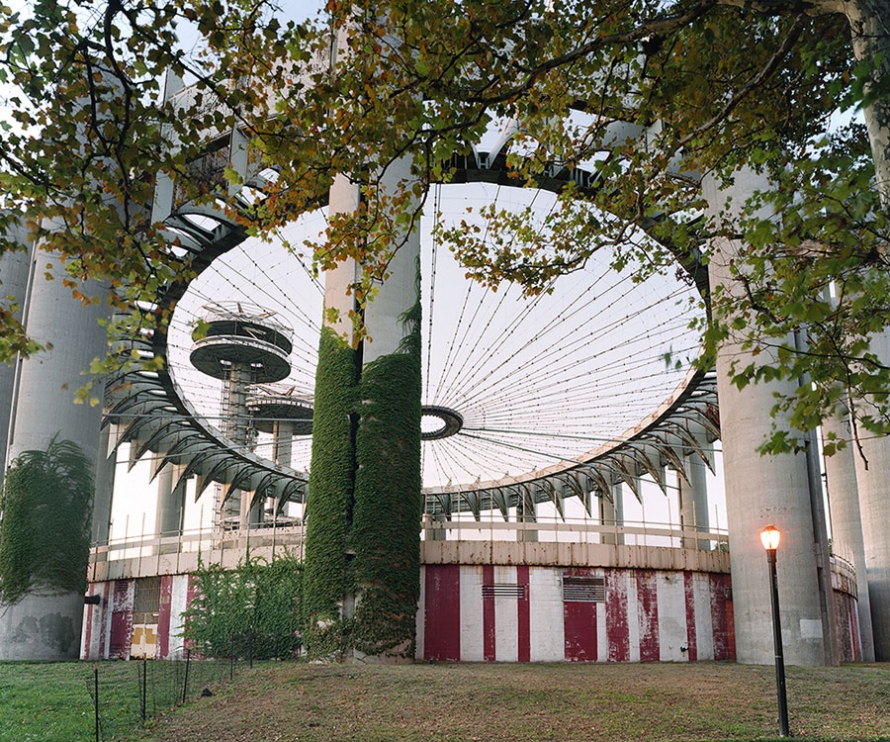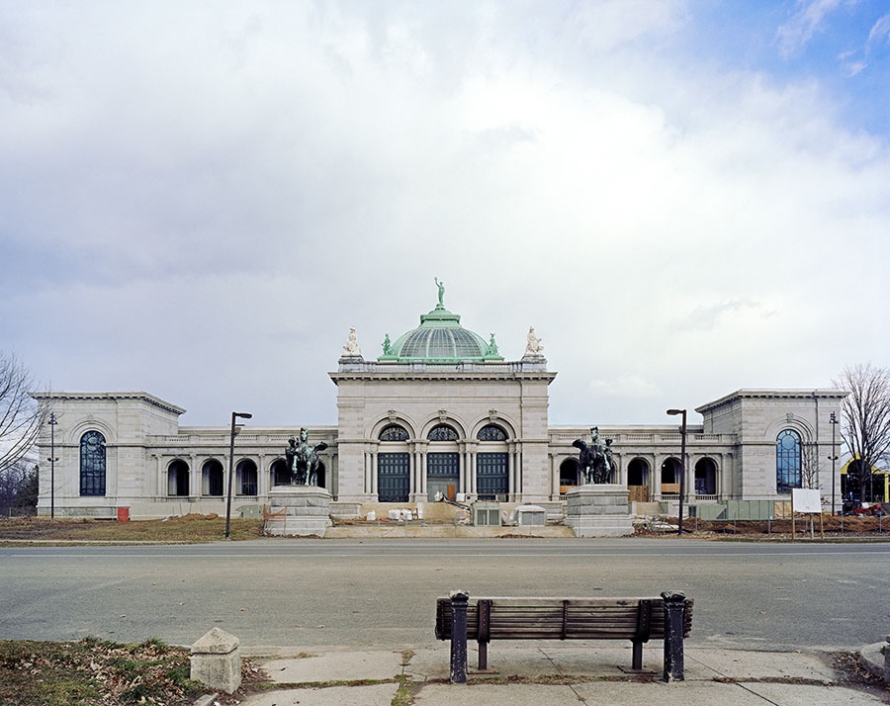When the liver transplant of Apple’s chief honcho is front-page news, it’s probably silly to point out how embedded and banal technology’s become in our everyday lives. But once upon a time, you needed to visit the latest World’s Fair to see what was new—and the structures and relics of those events still live among us, even if they’re treated like so many architectural burger wrappers. Photographer Jade Doskow is tracking down each site, one by one, and seeing how the once-grand spectacle sites exist today.
Jade Doskow was born in 1978 in Pennsylvania. She received her MFA in photography from the School of Visual Arts in New York, and has spent the past year shooting World’s Fair sites. While at SVA, Doskow received the prestigious Alumni Scholarship Award and has had her work featured in Photo-District News, New York Arts Magazine, and the Visual Arts Journal.
Where did your interest in World’s Fair sites begin?
In simplest terms: a trip to Seville. I was on a bus from the old city over the Guadalquivir River, driving on one of Santiago Calatrava’s wonderful, whimsical bridges. This white, ethereal structure brought together the old, stone Seville and a strange wonderland of white pavilions, surrounded by dirty fountains, garbage, and weeds. It was not your typical, photographic image of ‘abandoned,’ however, as the buildings were modern and not all aesthetically pleasing. Several were in use, and several were not. A canal stretched off into the distance that had been dried and was now filled with weeds, and rising above that a fake rocket ship. It was one of the oddest visual paradoxes I had ever witnessed.
I came back to the idea several years later in my last year of grad school. It felt like the perfect time and framework to begin executing this grand project idea. In the time between the trip to Seville and the beginning of the project, I had been shooting architecture exclusively, especially outdated or unused. I loved the ideas inherent to old world’s fair buildings; these structures were meant to reference ‘the future,’ yet in the actual future appeared clunky and odd.
What happened to the World’s Fair as a concept? Do today’s World’s Fairs compare to yesterday’s?
The notion of a world’s fair certainly comes across as old-fashioned and a bit of an anomaly. The initial attraction of these events were multifaceted, and seeing as there was no internet or television in the 19th century, these events were over-the-top spectacles that brought together the greatest in engineering and cultural achievements, the arts, philosophy, invention, ‘exotic’ cultures for Westerners to gawk at, and architectural competition between nations.
World’s fairs are still held every two to four years, typically in Europe and Asia. The last fair was 2008 in Zaragoza, Spain, with a focus on water and green living and architecture. Increasingly the fairs’ focus has become environmentally minded.
Obviously, a world’s fair does not have the same cultural impact that it would have had pre 1900’s. It is not necessary to travel across a country or continent to find out about a new technological achievement. In the 20th century there has been more of a focus on ‘nation branding’ and marketing. This is not a new idea; it was present in the 19th century expositions as well. Overall, the inherent ideas behind a world’s fair have been swallowed up in a world already teeming with stimulus and spectacles, which perhaps weren’t quite so abundant in the 19th century.
I know I’m always a little awed to see the remnants in Queens from the New York State Pavillion, though I’m worried some kids are going to think it’s only a left-over set from Men in Black. How are these sites and structures used now in their communities?
This has become a large focus of the project. There is a seeming arbitrariness to how the sites and structures remaining of these events currently exist in time. Often the hosting city would use the fair as a purpose to turn an unused part of the city into a public park. In a few of my photographs (Audubon Park, New Orleans, Parc du Cinquantenaire, Brussels) the picture is of the park, with or without structures from the fair. Typically, there was not a great deal of foresight as to how the city could possibly afford to maintain these large and often oddly engineered buildings.
The most famous out of all of the fair structures is the Eiffel Tower, and in my depiction of this national icon, it is flanked by two neoclassical buildings in the foreground—the Palais de Chaillot and the Trocadéro—from the 1937 exposition. The city planners of Paris had the vision to keep reusing and expanding upon the original fair site, resulting in arguably the most successful tourist attraction on the planet. And seeing as Paris (at least, since the time of Haussmann) is a city devoted to preserving its monuments and grand European aura, it is not a huge surprise that this is one of the most well maintained sites.
In Chicago, the site of the infamous 1893 Columbian Exposition, only one structure remains around Jackson Park (the Palace of Fine Arts, now the Museum of Science), and the landscaping of Frederick Law Olmstead. For this reason, I chose to make a long exposure of the empty land on the shore of Lake Michigan where the largest fair structures once would have stood before they were destroyed by arson. In this instance, it is my intention to emphasize the presence of nothingness as a stand-in for these huge buildings.
The New York State Pavilion in Queens that was designed by Philip Johnson sits in disrepair, ivy growing around its stocky concrete columns and rust increasingly a problem of the festive paint job. The Atomium, on the other hand, has recently been completely renovated, and is now a tourist attraction in Brussels. One of the huge spheres is available to rent for parties and events.
Ultimately every site is incredibly specific as to that city’s financial reserves, long-term planning, and the importance of historical preservation for a particular structure or plot of land.
Which fair would you travel back in time to visit?
I would have to say the Chicago 1893 site was provocative, again, because of its lack of structural remains in conjunction with the myth of the Columbian Exposition. This huge, ambitious event was organized by some of the nation’s top architects and designers (Daniel Burnham, the firm of McKim, Mead & White, Louis Sullivan), and organized so well that it effectively took a small city and put it out there on the map alongside the more major urban forces of the time, New York and Paris; it took a Midwestern town and transformed it into a cosmopolitan cultural force.
The White City, as the Columbian exposition was known, was remarkable on many levels. For one, the buildings were covered in white stucco and electric bulbs, and in contrast with the grimy tenements surrounding the park, must have appeared like a glowing mirage amongst the fantastic landscaping of Frederick Law Olmstead. A huge ferris wheel rose into the sky, each car capable of holding 60 people. And for entertainment many people were first exposed to ragtime music, hamburgers, and the first moving pictures, invented and lectured on by Eadweard Muybridge.
Another amazing event to have experienced would have been the Philips pavilion at the 1958 exposition in Brussels. Featuring electronic music by Edgar Varése and design and film projections by Le Corbusier, I cannot even fathom how fair-goers of the ‘50s would have reacted to quite possibly the world’s first multi-media installation project.
To conclude the idea of ‘time travel,’ I have often felt during the course of this project that the project is itself a time machine, for me the artist. I spend time researching each site prior to the shoot, absorbing old data and photographs. I initially arrive at the site armed only with an original fair map. I then explore the site with this map, imagining what it must have felt and looked like during the course of the exposition. I usually spend three to eight days at the site, really trying to understand the current incarnation of the buildings and the landscaping, imagining the aura the fair must have originally evoked. So while an actual time machine would be amazing, I feel I already have one through the process of shooting.
What are you working on now?
Currently I am planning a trip to Buffalo, New York, to photograph the 1901 site, and in the fall, perhaps Vienna. I also have been documenting the changing face of Red Hook, Brooklyn for the last five years. I have a new project in the works as well, examining repurposed bank buildings.
Ultimately, I plan to photograph all of the remaining world’s fair sites internationally, about 50 sites over the next seven years.
